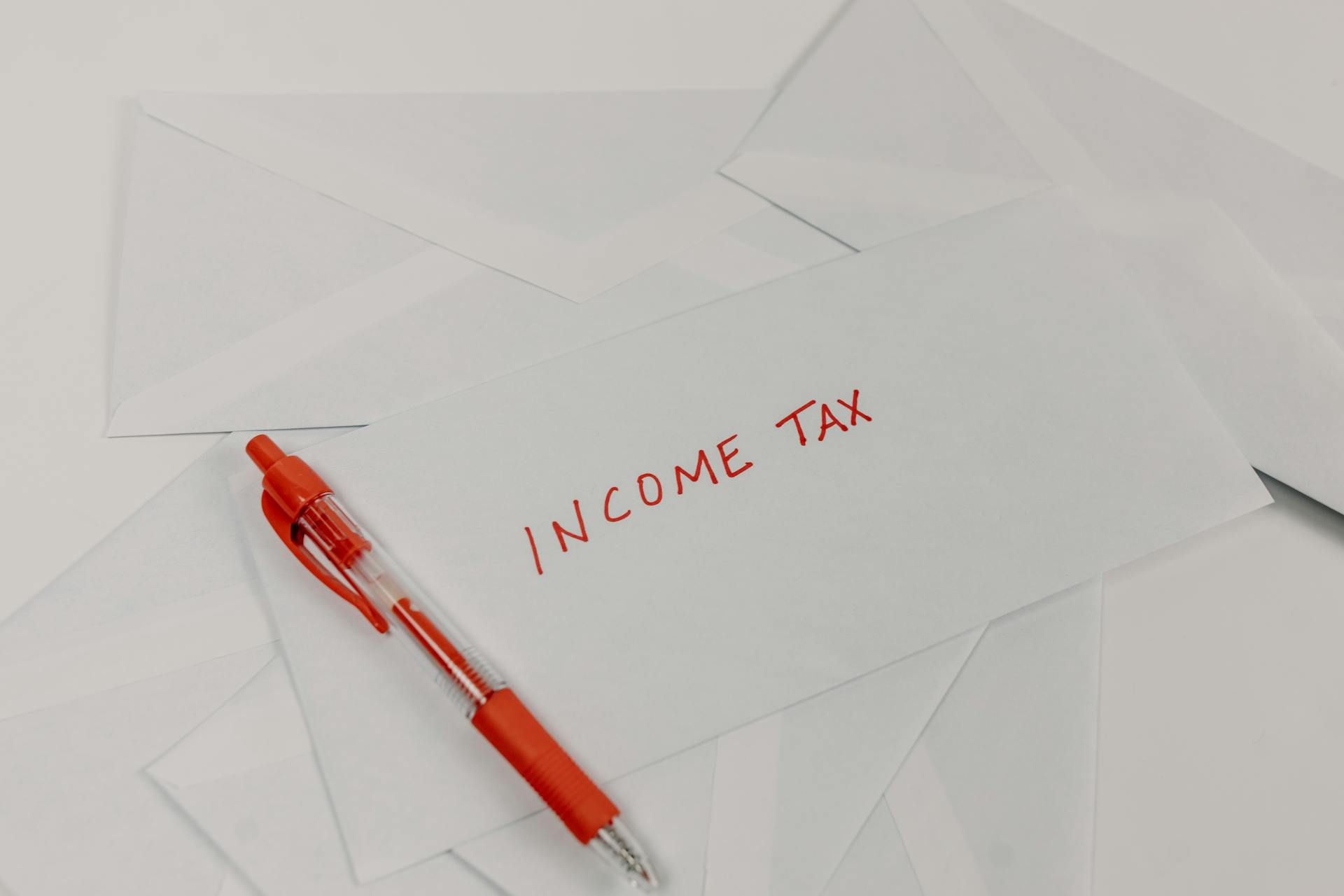
The tax equity market for clean energy investments can be a complex and nuanced space, but understanding the basics can help you navigate it more effectively. The tax equity market is a vital source of funding for clean energy projects, with over $10 billion in investments made in 2020 alone.
To get started, it's essential to understand the different types of tax equity investors. According to recent data, there are over 100 tax equity investors in the US market, ranging from large financial institutions to smaller private equity firms.
These investors provide critical funding for clean energy projects, often in the form of tax equity investments. Tax equity investments allow project developers to monetize tax credits, such as the production tax credit (PTC) and the investment tax credit (ITC), which can be worth tens of millions of dollars.
The tax equity market is highly competitive, with multiple investors vying for a limited number of deals. This competition can drive up prices and make it more challenging for project developers to secure funding.
Explore further: Project on Equity Market
Benefits and Importance
The tax equity market offers numerous benefits and importance for renewable energy projects.
Tax equity investments can provide a predictable stream of cash flows with strong after-tax yields, making them a stable and high-yield investment option.
Investors can claim 30% of their total installation costs, known as the Solar Investment Tax Credit (ITC), which can significantly reduce their taxable income.
Tax equity transactions allow project sponsors to monetize federal tax credits and other tax benefits for clean energy projects.
The tax equity investor provides between one-third to two-thirds of the total capital of a clean energy project, injecting essential upfront capital into its development.
Tax equity investments can offer diversification benefits due to their limited correlation to interest rates, reducing the overall risk exposure and potentially enhancing portfolio performance.
Here are some of the key benefits of tax equity investments:
- Enabling Project Financing: Tax equity investors provide essential upfront capital into the development of clean energy projects.
- Fully Utilizing Tax Incentives: Tax equity transactions allow project sponsors to monetize federal tax credits and other tax benefits for clean energy projects.
- Enhancing Financial Stability: Tax equity provides additional value to project sponsors in the form of long-term commitments to fund projects.
By investing in solar energy projects, investors can contribute to mitigating climate change and supporting sustainable development, which can enhance their overall ESG profile and meet the increasing demand for socially responsible investments.
Investors and Partners
Investors in the tax equity market include domestic banks, which represent approximately 80% of the annual clean energy tax equity market.
Domestic banks are not the only players in this market, with insurance companies and other large tax-paying corporations also making tax equity investments.
Nelnet Renewable Energy is a leading partner for tax equity investments, with over $278 million of tax equity under management between them and their co-investment partners to date.
Eligibility Criteria
To qualify as a solar tax credit investor, you must be a C Corporation with a significant federal tax bill that can be offset by the value of the solar tax credit.
A C Corporation is a type of business structure that is taxed separately from its owners, and it's this separate taxation that makes it eligible for the solar tax credit.
If you own or manage commercial real estate properties, you can also qualify as a solar tax credit investor.
Consider reading: Advance Corporation Tax
This is because the depreciation tax value associated with the solar energy project can be used to offset your passive income, making you eligible for the credit.
To qualify through passive income, you'll need to have sufficient income that can be used to offset the value of the solar tax credit and the depreciation tax value associated with the solar energy project.
You might enjoy: For a Firm That Must Pay Income Taxes Depreciation Expense
Who Makes Investments?
When looking at the types of investors involved in the clean energy market, it's clear that they come from a variety of backgrounds. Domestic banks represent approximately 80% of the annual clean energy tax equity market.
Insurance companies and other large tax-paying corporations also play a significant role in making tax equity investments. They're often drawn to the financial benefits of these investments.
The Value of an Experienced Partner
Investing in ITC investments can be complex, but working with experienced professionals can help navigate the risks and opportunities.
Investors need to work with experienced partners to make the most of ITC investments.
A leading partner for sustainability and investment efforts is Nelnet Renewable Energy, which has over $278 million of tax equity under management between them and their co-investment partners.
Nelnet Renewable Energy currently has tax equity investments into solar projects spanning 19 states and over 252 solar projects powering nearly 118,000 homes each year.
Suggestion: Tax Equity Financing Solar
Risk Profile
As an investor, it's essential to understand the risk profile of tax equity investments. Investors view tax equity as a low-risk asset class.
The stable and predictable returns from tax credits and accelerated depreciation benefits make tax equity investments a reliable choice. These returns are a key factor in the attractive risk-adjusted returns of tax equity investments.
Tax equity investors are positioned as senior equity above the project sponsor's junior equity, ensuring priority for the tax equity investor in earnings and distributions. This senior position provides a level of security for investors.
Discover more: Equity Market Risk Premium
Limited exposure to development and construction risks is another advantage of tax equity investments. This means investors can focus on the financial aspects of the project without worrying about the development process.
Robust underwriting processes and structures are in place to perform well under various stress scenarios. This gives investors confidence in the stability of their investment.
The short investment horizon of 6-10 years is a significant benefit for tax equity investors. This allows them to receive the substantial majority of tax benefits within a relatively short period, compared to the useful life of the asset (25-30 years).
Here's a summary of the key characteristics that contribute to the low-risk profile of tax equity investments:
- Stable, predictable returns from tax credits and accelerated depreciation benefits.
- Senior equity position above the project sponsor's junior equity.
- Limited exposure to development and construction risks.
- Robust underwriting processes and structures.
- Short investment horizon of 6-10 years.
How It Works
Renewable energy projects are often held in limited liability corporations (LLC) and taxed as partnerships.
In a typical transaction, the project sponsor forms a partnership with a tax equity investor to jointly own the project LLC. The tax equity investor acts as a passive owner and receives a pre-negotiated rate of return.
Around 80% of the tax equity investor's return comes from tax credits and other tax-related benefits, like claiming all the depreciation of the project's qualified assets in the first five years of the project. The rest of the return comes from the cash flows of the project.
Readers also liked: Investor Sentiment Chart
How It Works

Renewable energy projects are often held in limited liability corporations (LLC) and taxed as partnerships.
In a typical transaction, the project sponsor forms a partnership with a tax equity investor to jointly own the project LLC. The tax equity investor acts as a passive owner and receives a pre-negotiated rate of return, around 80% of which comes from tax credits and other tax-related benefits.
Partnership flips are the predominant tax equity structure in the U.S. clean energy market for both PTC and ITC investments.
The tax equity investor typically receives 99% of the tax attributes and a minority share of the cash, often between 5% and 30%. The initial allocation of benefits is sustained until a specific predetermined benchmark is reached.
Once the target benchmark is reached, the tax allocations and cash distributions received by the tax equity investor decrease, usually to about 5%. The developer then inherits most of the remaining financial and tax benefits.
Expand your knowledge: Refi Cash Out Taxable
Looking Ahead

To meet the goals of the Inflation Reduction Act, tax equity will need to increase from $20 billion to over $50 billion annually. This significant boost is essential to support the growth of renewable energy projects.
The Inflation Reduction Act introduced transferability and direct pay as additional options to monetize the PTC and ITC. These options are meant to work alongside traditional tax equity to optimize their benefits.
Tax equity players will continue to play a crucial role in providing due diligence and syndication services for non-traditional investors. This expertise will be vital in helping these investors navigate the complex world of tax equity.
The ITC is a one-time tax credit based on a percentage of a project's cost. This credit is claimed in the year the project is placed in service.
The PTC, on the other hand, is a per-kilowatt hour tax credit paid over a 10-year period. This credit rewards projects for generating electricity from renewable energy sources.
Related reading: Venmo Will I Receive 1099-k for Personal Account
Frequently Asked Questions
What is tax equity in economics?
Tax equity refers to the fairness of how the tax burden is distributed among individuals and groups. It's based on the benefits principle, where people pay taxes according to the benefits they receive from government services.
Sources
- https://www.lexology.com/library/detail.aspx
- https://www.forbes.com/councils/forbesfinancecouncil/2023/05/10/the-ins-and-outs-of-solar-tax-equity-financing/
- https://acore.org/resources/tax-equity-enabling-clean-energy-and-growing-the-american-economy/
- https://cebuyers.org/blog/leveraging-tax-equity-investment-in-your-clean-energy-strategy/
- https://nelnetenergy.com/insights/advantages-solar-tax-equity-investments-offer-banks-and-corporates-today/
Featured Images: pexels.com


